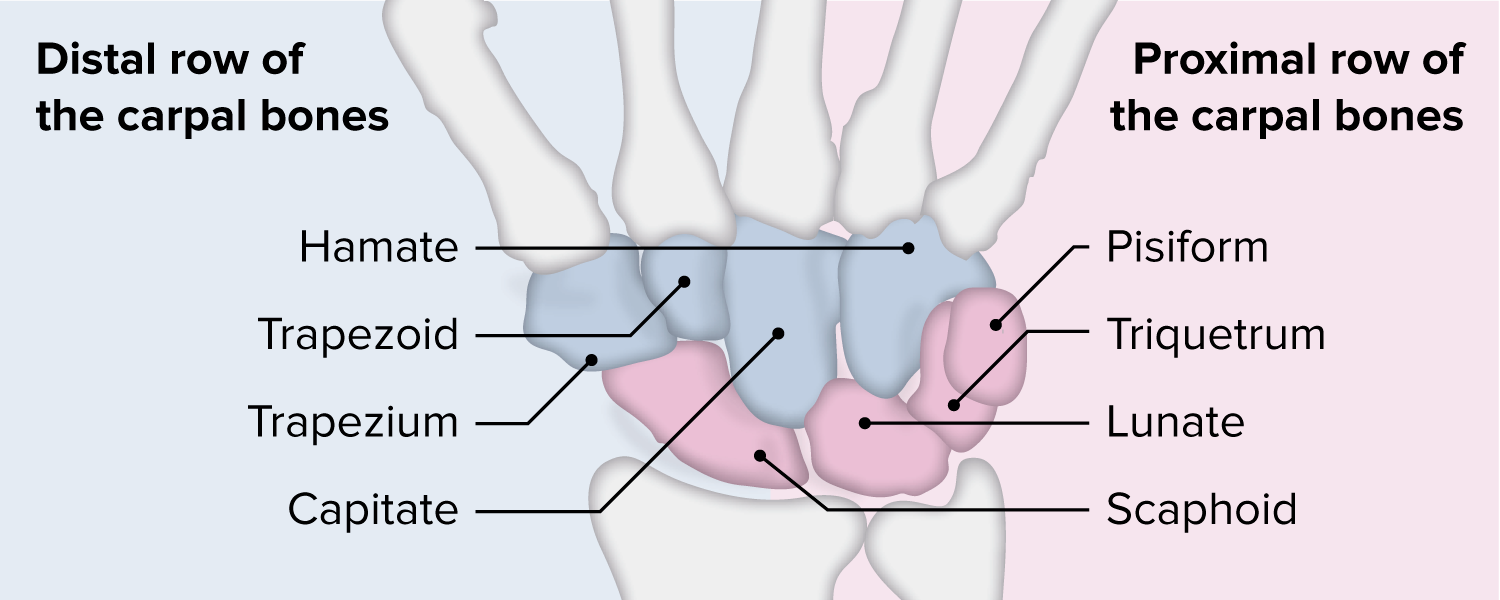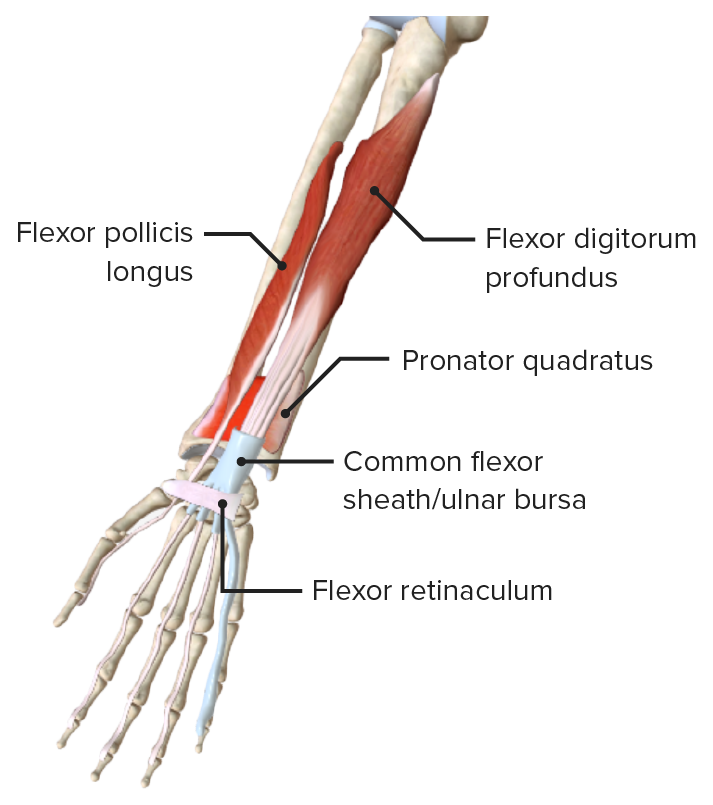Playlist
Show Playlist
Hide Playlist
Ulna
-
Slide Ulna.pdf
-
Reference List Anatomy.pdf
-
Download Lecture Overview
00:01 Okay. So, now, let's have a look at the ulna. 00:03 We've spoken about the ulna and some of its bony features when we looked at the elbow. 00:08 So, now, let's have a look at the ulna in a bit more detail. It's medially positioned compared to the radius. 00:14 And it's one of two bones that form the forearm. So, here, we have a look at the ulna. 00:19 We can see we have a proximal end, a shaft, and a distal end. So, similar to that of the humerus. 00:25 And here, we can see some of those landmarks again that we saw when we were talking about the elbow. 00:30 So, here, we have the anterior view. 00:33 We can see if we turn on the lateral view, we can see the shape and the contours of it and how it can sit in the olecranon fossa and here, we have the posterior view. 00:42 Posteriorly, you can nicely see the olecranon here and it's also highlighted in green on the lateral view. 00:48 And you can see that concavity created by the olecranon. We can also see the coronoid process. 00:54 And that helps to sit on the coronoid fossa when the elbow joint is fully flexed. 01:00 We can also see the trochlear notch and that's the aspect of the ulna that articulates with the trochlea, again, allowing flexion and extension of this joint. 01:10 The radial notch is located on the lateral aspect of the ulna and this allows the head of the radius which is circular in structure to actually rotate around. 01:20 Again, allowing pronation and supranation to occur. Here, we have a bony prominence on the ulna. 01:26 This is the tuberosity of the ulna, allowing bony, allowing the muscle attachment site to this region. 01:33 Now, we can see by introducing the distal end of the humerus into this space how the coronoid process can articulate with the coronoid fossa. 01:41 So, we can see how we flex the elbow. We can see how those two regions come into close prominence. 01:48 And here, we can see as we extend the elbow, how the olecranon can sit in the olecranon fossa of the humerus. 01:55 Now, let's have a look at the shaft of the ulna. 01:58 Here, we have an interosseous border and this is important because between the ulna and the radius, along this region, we have the interosseous membrane and that's an important place again for various muscles to attach. 02:12 Here, we can see the anterior border of the ulna and if rotated, we can see this posterior border. 02:18 This gives rise to an anterior surface, a medial surface, and then, a posterior surface when we have it rotated around. 02:27 If we then go to look at the distal end of the ulna, we can see we have the main prominent head and also, a small piece that projects out and this is the styloid process.
About the Lecture
The lecture Ulna by James Pickering, PhD is from the course Osteology and Surface Anatomy of the Upper Limbs.
Included Quiz Questions
At which aspect of the wrist joint can one palpate the styloid process of the ulna?
- Medial
- Anterior
- Posterior
- Lateral
- Superior
In which position does the coronoid process of the ulna fit into the coronoid fossa of the humerus?
- Full flexion
- Extension
- Pronation
- Supination
- Partial flexion
Customer reviews
5,0 of 5 stars
| 5 Stars |
|
5 |
| 4 Stars |
|
0 |
| 3 Stars |
|
0 |
| 2 Stars |
|
0 |
| 1 Star |
|
0 |





